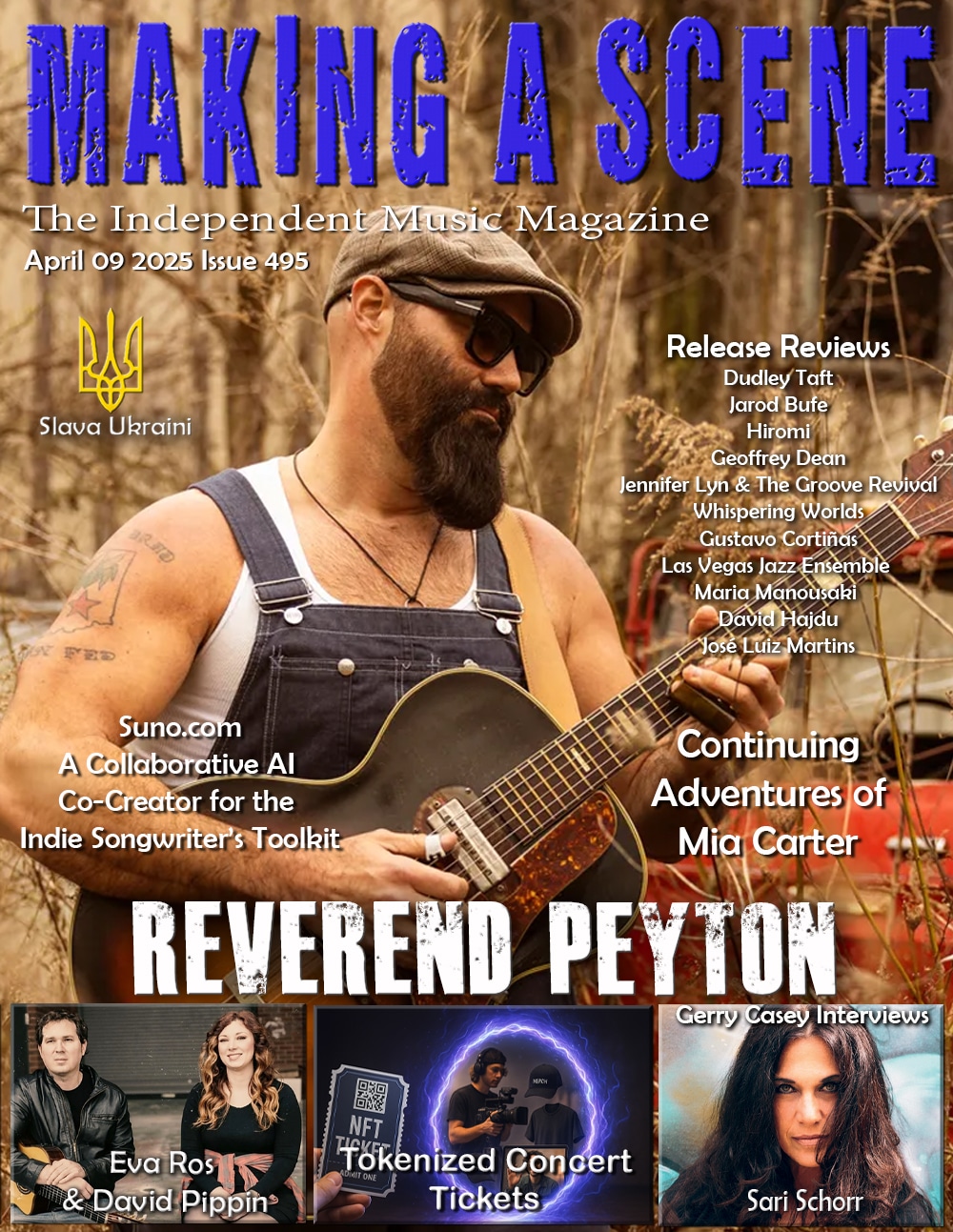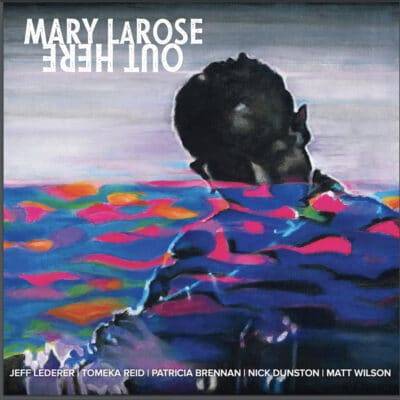Mary LaRose Out Here
Out Here
little (i) Music
Seldom has there been a more appropriate title for an album but it’s fascinating for fans of Eric Dolphy and the edgy music that he made in the early sixties. Vocalist Mary LaRose dedicates Out Here, a play on ‘out there,’ entirely to the music of Dolphy, using both vocalese and original lyrics that she composed for his compositions. Taking cues from some of Dolphy’s unique instrumentation, LaRose recruited a chamber ensemble including reeds, cello, vibraphone, double bass, and drums. The formidable players are clarinetist/arranger Jeff Lederer, cellist Tomeka Reid, vibraphonist Patricia Brennan, bassist Nick Duston, and drummer Matt Wilson.
LaRose and Lederer took a deep dive, researching the Dolphy collection at the Library of Congress, which Lederer described this way, “To hold the manuscript versions of a composition like “Hat and Beard” in my own (gloved) hand was a thrilling experience. In addition to understanding his compositional intentions even better, the manuscripts also revealed many chamber-like settings of the music Dolphy had conceived of – some recorded and others existing only on paper.” So, Lederer took the chamber setting approach, allowing room for his bandmates to improvise as well.
The album begins with LaRose in vocalese style on “Gazelloni,” one of two from Dolphy’s most famous, and only album for Blue Note, Out to Lunch, from which the title track also appears. Reid’s cello solo is stunning, and you’ll hear Lederer on clarinet, about which he says he says he chose very early to exclusively play clarinet. That too, gives the project a slightly different feel as Dolphy rarely played clarinet, and is far better known for alto sax and bass clarinet. Strong interplay between bassist Duston, vibraphonist Brennan and drummer Wilson follow.
“245” comes from Dolphy’s first album as a leader, 1960’s Outward Bound. Here LaRose sings her composed lyrics as the title is a reference to Dolphy’s address on Carlton Avenue in Brooklyn. Lederer delivers one of his most stirring, almost Dolphy bass clarinet-like solo on this one. Later the tune “GW” appears, a nod to California big band leader Gerald Wilson, from the same album, where each member has a chance to stretch out.
The group draws “Out There” and “Serene” from Dolphy’s 1961 Out There. LaRose sings both sings and engages in vocalese on the former while Wilson with brushes and the combination of bowed bass and cello create some interesting sonics, punctuated by vibes and some interesting effects before Lederer’s brooding bird call like entrance. On “Serene” we hear LaRose reciting a poem over the haunting string backdrop before she breaks into song. Lederer’s clarinet in counterpoint to her vocals highlights this one.
“Music Matador” and “Love Me” are from 1963’s Conversations, first released by FM and later by Vee-Jay. These selections can also be heard on the 3 CD set from Resonance, 2018’s Eric Dolphy: Musical Prophet: The expanded 1963 New York Studio Sessions. The former is one of two which highlights Dolphy’s lesser-known Panamanian roots and his flair for Afro-Caribbean styles. It’s s buoyant number which takes on additional colors with the contributions of salsa trombonist Jimmy Bosch alongside percussion great Bobby Sanabria. “Love Me,” on the other hand, is another of the shining LaRose – Lederer melody – counterpoint forays. As a former clarinetist, this writer hears notes from Lederer, especially in the low register, that seem impossible. Further inspection indicates he is indeed playing bass clarinet.
The most recognizable Dolphy tune for most listeners is “Out to Lunch,” given a different feel with LaRose’s vocals and Lederer’s clarinet instead of the originator’s alto although they stay true to the melody. The vibes call to mind the original, but the cello takes it a new direction. The closer is “Warm Canto,” the second of the Afro-Caribbean flair. It originally appeared on Mal Waldron’s 1961 album with Dolphy and Booker Ervin. It includes a LaRose reading of a “Bone poem” by contemporary haiku master Patricia Donegan. Lederer invited two of his former clarinet students to join him while LaRose sang the three-part counterpoint with herself wordlessly.
This is not the first time LaRose has taken on a project of this type, having written words to the music of Ornette Coleman, Anthony Braxton, and other pioneering jazz artists. LaRose is also an accomplished visual artist whose work adorns the cover of this album. The label will also release an art book of her work, Out There, which contains her portraits of 40 saxophonists of the 1960s, including Dolphy, Yusef Lateef, and others.
Just as many of us jazz aficionados say “Bird Lives: about Charlie Parker, Dolphy’s music gets new life through this reimagining. Dolphy, is, of course, far lesser known but increasingly looked upon as a underrecognized musical genius. His light shines brightly through LaRose’s work.
- Jim Hynes
Buy Us a Cup of Coffee!
Join the movement in supporting Making a Scene, the premier independent resource for both emerging musicians and the dedicated fans who champion them.
We showcase this vibrant community that celebrates the raw talent and creative spirit driving the music industry forward. From insightful articles and in-depth interviews to exclusive content and insider tips, Making a Scene empowers artists to thrive and fans to discover their next favorite sound.
Together, let’s amplify the voices of independent musicians and forge unforgettable connections through the power of music
Make a one-time donation
Make a monthly donation
Make a yearly donation
Buy us a cup of Coffee!
Or enter a custom amount
Your contribution is appreciated.
Your contribution is appreciated.
Your contribution is appreciated.
DonateDonate monthlyDonate yearlyYou can donate directly through Paypal!
Subscribe to Our Newsletter
Discover more from Making A Scene!
Subscribe to get the latest posts sent to your email.
















































October 13, 2021 @ 1:13 pm
““Love Me,” on the other hand, is another of the shining LaRose – Lederer melody – counterpoint forays. As a former clarinetist, this writer hears notes from Lederer, especially in the low register, that seem impossible.” Jeff plays bass clarinet on that tune. On the following tune, “Warm Canto”, he plays three parts, two clarinets and one bass clarinet.